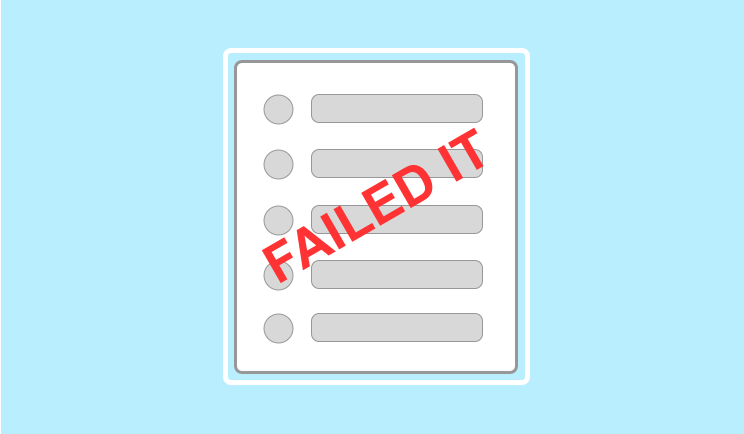

Account-based marketing is a solid technique for marketers to attract the right prospects into their marketing and sales funnels. By targeting specific accounts or individuals, you can “trim” off resources from your marketing efforts that may be spent capturing irrelevant leads.
You also help target your content and campaigns by focusing on specific known traits. These traits might include company size, job title, department, role, goals/challenges, and more. Moreover, targeted campaigns frequently deliver higher conversion rates.
But not every approach to account-based marketing is useful for B2B businesses. Here are five poor techniques we have seen fail or reduce the impact of ABM campaigns:
Purchasing lists of target accounts is a common tactic for sales teams who want to move quickly before generating leads organically. Sales reps tend to spam these lists with numerous outreaches.
While open rates can initially be high out of curiosity from recipients, we’ve seen low click-through and response rates across the board on cold-call campaigns. To receive any positive feedback you need to generate a high volume of outbound emails, wasting time that could be spend with more targeted and fruitful campaigns.
Why? Because you’re not providing immediate value. You also assume that there is a pain point — and you push a solution or suggestion — before the recipient has had a chance to understand and explore the pain point themselves. This leads to aggravation or disinterest.
What’s worse, you might actually create a bad impression of your company or receive an “unsubscribe” notice or spam complaint. This response hurts your chances of moving the needle with a specific account.
According to a Baylor University study quoted by HubSpot (1), only 1% of cold calls result in a booked prospect meeting. That means 99% of your efforts are wasted.
Phones are getting smarter about identifying and blocking suspected spam callers. And just like email, more smartphone providers are allowing users to report callers as spam.
When cold calling, you are expecting your target prospects to hyperspeed through a buying journey that otherwise would take a fair amount of self-research.
Challenge your business development team to find other ways to reach account-based leads, such as opt-in campaigns on LinkedIn.
Setting a goal for your marketing team is a great idea for account-based lead generation. Marketing teams can thrive when they understand a quota for sales-qualified leads.
However, if this goal is set by the sales team, and then if the sales team prospects leads in a bubble that does not include marketing, tensions rise and results start to fall.
Marketers need insights into how their leads are being followed up with. Teams should strive for transparency and collaboration instead of a “blame game.”
Leaving a sales team to its own devices is a broken system by design, and one we have seen fail over and over. This system does not work. Instead, the two teams need to work collaboratively and be incentivized by the same goals. They need to share talent and knowledge to generate leads, nurture and progressively profile them, then respond with a clear outreach that is informed by the marketing team’s valuable insights.
Having a shared CRM with clear funnels and handoff points is critical to paving a smooth, successful lead experience.
Investing heavily in one channel for ABM lead generation is a great way to waste your money. Account-based marketing, like other marketing efforts, needs a broader view of the buyer’s journey. Furthermore, you can’t gain insights on the impact of your efforts if you don’t diversify to different channels to find the right channel and messaging mix.
Instead, start with a lean campaign that invests small budgets in a range of ABM channels. Then, audit your results every few days and shift budget where you see the greatest impact in order to scale.
A surefire way to fail at ABM is to send three appointment-setting emails to determine a “good” or “bad” lead. This is a common bad practice that leads reps to give up too early based on bad information. A transaction-heavy form of engagement is an invalid ABM technique. Usually, this is a common practice by sales teams that wish to "check the box" on leads derived from marketing, without investing additional effort.
Often there is a lack of value being offered and a lack of true investment in the relationship. Instead, sales reps should use a diversity of channels. For example, in addition to email, reps should practice outreach channels like a personalized website, personalized email, video, value-driven offers, and truly useful content that builds buyer motivation. The marketing team can help craft emails that are mindful of context gained from marketing activities.
Account-based marketing is an impactful way to generate leads and save resources spent on unqualified leads. However, successful ABM requires a targeted effort from both marketing and sales teams that goes beyond traditional cold outreach tactics. To win at account-based marketing, your lead generation team must be aligned around adding value and building relationships.
Sources: https://blog.hubspot.com/sales/cold-calling-statistics
by Jonathan Franchell, CEO of Ironpaper - For more tips and hacks: Need to remove a new line after h1 tags? Both web designers and SEO practitioners need to employ headline tags: H1, H2, H3 in several ways to improve web page structure and tag...

The Crowded Arena of the IT Marketplace Updated December 2024 The Information Technology (IT) landscape is experiencing rapid growth and intensifying competition. IT spending is projected to reach nearly 5.1 trillion U.S. dollars in 2024, a...

Updated December, 2024 The field of digital marketing is evolving rapidly in response to new technology and changing buyer expectations. To help career-minded marketers, we’ve rounded up the top 10 skills needed to succeed in the field. These are...

The marketing industry is transforming significantly due to generative AI and increasing market complexity. Gartner's prediction of a 25% decline in traditional search traffic suggests that the era of search engines is dying. AI tools, particularly...
